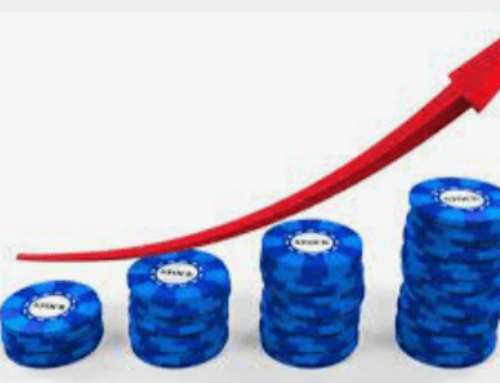What are Value Stocks
Value stocks are those stocks that are being traded at a value lower than their intrinsic value. It typically means that such stocks are undervalued and their value appears low as compared to the company’s financial performance, measured by its revenue, dividends, yield, earnings and profit margins. These kinds of stocks have the potential to grow and give substantial returns in the future. The investors who trade in these stocks generally assume that the price of the stock will rise in the long term, as the company depicts strong fundamentals and good strength.
These value stocks work with the basic concept of buying and selling as done with any other stocks. The investor needs to identify, from his own experience and analysis, companies with a good fundamental base. Since the market reacts differently each day and overreacts to the news it changes the stock prices. The intrinsic value of the stock depends on the fundamentals based on the dividends, returns, sales and earnings etc. The value investor buys the stock at a discount/ lower price value and assumes that the stock price will rise and yield good returns on the invested amount.
Benjamin Graham invented the term value investing and wrote the classic book “The Intelligent Investor”. Many big investors like Warren Buffett, Radhakishan Damani also followed and mastered the same principle of value investing and went on to become the richest investors.
How to Find Value Stocks?
Value stocks are generally large, well-established companies that have strong business fundamentals but are undervalued for different reasons, such as negative PR, bad earnings. However, these companies tend to gain value in the long term and usually pay dividends well and do not tend to reinvest the earnings back into the company.
These stocks are cheaper than the other stocks such as the growth stocks. They generally tend to have a high dividend yield and a low price to earnings ratio. They generally are not affected by the market highs and lows and remain stable to the fluctuating market condition. Sometimes value stocks belong to those companies which have recently launched their IPOs and the awareness about them is very less in the market. It could also belong to a company which has been making losses, but has recovered and started showing profits in the last few quarters, yet remain unnoticed by the market. These company stocks, generally, are believed to pay back their debts on time and thus have constantly decreased the interest cost.
The investor has to do a thorough analysis of the intrinsic value of the company to identify a value stock. The intrinsic value of the company can be judged by few parameters like the brand name, company performance, its values and fundamentals, its cash flow, dividends, earnings and revenues, market structure and the business model of the company.
Now to understand these parameters, investors have to calculate the value of the stock which they are willing to buy. A few of the measures are mentioned below:
Current Ratio of the Company
The current ratio of the company is calculated by dividing the current assets by current liabilities. This ratio should ideally be more than 1.5 to ensure that the company has enough cash to pay back the dividends, the debts and invest in other company expansion policies etc.
Debts of the Company
The company should always have a healthy debt on itself as a higher debt would increase the liabilities on it making it less profitable in the long run. Debts of the company are often compared with the other stocks to effectively identify the value stocks.
Price to Book Value Ratio (P/BV Ratio)
The price to book value ratio is calculated by dividing the company’s stock price by its book value per share. The book value is the total assets minus the liabilities of the company. Hence the low P/BV ratio is indicative of the value stocks.
Price to Earnings Ratio
The price to earnings ratio is calculated by dividing the company’s stock price by its earnings per share. The P/E ratio helps to determine the relationship between the stock price in the market and its actual earnings as per books. Low P/E ratios indicate that the stocks are undervalued and thus have a chance of increment in share price in the future.
Less or No Earning Deficit
It is very important to understand the financial condition of the company. If the earning per share keeps increasing during the last few years, it is always safer to invest in such companies, rather than investing in companies with an earning deficit.
Check the Company’s Management
Checking on the company management is very important for anyone looking for value stocks. Since value stocks are considered to be invested for the long term, it is always a wise decision to check the management to ensure efficient operation and performance in the long run. It is very vital to understand the efficacy, experience and qualification of the management to choose a value stock.
Good Quality Ratings
One should try considering those stocks with good or average ratings given by reliable rating agencies like CRISIL.
Who prefers to buy Value Stocks?
- Low-Risk Appetite and High Reward – If your primary goal of investing is to keep your risk of permanent losses to an absolute minimum while increasing your chances to generate positive returns, then you are probably inclined to become a value investor. On the contrary, those who prefer to follow the hottest companies in the market often find value investing boring. One of the biggest advantages of value investing is that it’s subject to far less risk and volatility than most short-term investment strategies. Everyone likes a bargain, and value investing seeks the selling of stocks at a discount to their intrinsic value. To make money with a value stock, the investor has to realize that there will be a mismatch between the stock’s current price and what it is worth. Once that happens, the share price should go up to reflect the higher intrinsic value. Then those who bought in at a discount will get their profit. As a value investor, you have to be resilient as well.
- Seeking Time Compounding and making Investing Less Time Monitoring – Value investing is an ideal way to take advantage of the power of compounding. When you reinvest the returns and dividends you earn from your value stocks, your profits grow exponentially over time. So if you are someone who cannot probably keep an eye on the daily market fluctuations, and are willing to wait long term, you tend to become a value investor. So, you don’t have to get caught up in the daily whirlwind of market price fluctuations and spend your days monitoring the performance of your stock holdings.
A few of the limitations or drawbacks of Value investing are that every investor cannot decide to be a value investor. It requires a lot of time, research and analysis before finding a value stock and there is a high possibility of your decision going wrong while selecting a stock.
Hence an investor should begin by investing in less risky financial instruments when they initially begin. For investors looking for short term gains these may not prove to be fruitful, as undervalued stocks need time to show their true worth. However, if you are a patient investor who has done exhaustive research and believes in the fundamental capabilities of the business, then investing in undervalued stocks could be a rewarding experience.
Limitations of Value Stocks are:
- Difficult to estimate a value stock – If value investing doesn’t match up well with your particular investing style, you might not consider it. It is generally difficult to figure out the value stocks, a lot of research and analysis performance is required to figure out the stock
- Time-consuming – Like we say it’s not my cup of tea, value investing is also not for everyone. Those who want to reap the benefits quickly may find it challenging. Sometimes investors have to hold their positions for years until the market changes in their favour and many tend to lose patience and quit in between.
- Pitfalls of waiting – Sometimes a value stock may seem fruitful, but can equally turn to a dead end. Value traders generally can hold stocks for a lifetime but if they never see them turn around, and in such a no-win situation, investors are forced to quit with a loss.
- Risk of Flawed analysis – These types of shares are difficult to identify and estimating the intrinsic value requires a certain level of expertise, that not every investor has. Even if they do, there are a lot of things beyond investors’ control like changes in management and the behaviour of peers. You can analyse all the fundamentals but there’s no guarantee you’ll make the right decision.
- Require Investor Mindset – For investing in a value stock, there is no room for emotions. While this can make investing easier on one level, it can also be a challenging mindset to adopt over the long term. In general, we are prone to make decisions emotionally, and this often leads to our downfall. This mindset means eliminating the emotions of fear and greed from your decision-making process and keeping in mind that your actions should be based on fact and data and not the gut feeling.
A few of the value stocks to mention would be:
- ITC
- Hindustan Unilever
- ONGC
- Powergrid
- Maruti
- Ultratech Cement
Readers are suggested to analyze before investing in the above-mentioned stocks, as these are just suggestions based on the current market scenario and since the market changes so rapidly, it is advisable to make wise decisions based on proper analysis.
Howdy!
If you’re here for the first time, let’s get introduced.
VRD Nation is India’s premier stock market training institute and we (Team VRD Nation) are passionate about teaching each and every aspect of investing and trading.
If you’re here for the first time, don’t forget to check out “Free Training” section where we have tons of free videos and articles to kick start your stock market journey.
Also, we got two awesome YouTube channels where you can continue the learning process.
Must-Read Articles
What are Value Stocks
Value stocks are those stocks that are being traded at a value lower than their intrinsic value. It typically means that such stocks are undervalued and their value appears low as compared to the company’s financial performance, measured by its revenue, dividends, yield, earnings and profit margins. These kinds of stocks have the potential to grow and give substantial returns in the future. The investors who trade in these stocks generally assume that the price of the stock will rise in the long term, as the company depicts strong fundamentals and good strength.
These value stocks work with the basic concept of buying and selling as done with any other stocks. The investor needs to identify, from his own experience and analysis, companies with a good fundamental base. Since the market reacts differently each day and overreacts to the news it changes the stock prices. The intrinsic value of the stock depends on the fundamentals based on the dividends, returns, sales and earnings etc. The value investor buys the stock at a discount/ lower price value and assumes that the stock price will rise and yield good returns on the invested amount.
Benjamin Graham invented the term value investing and wrote the classic book “The Intelligent Investor”. Many big investors like Warren Buffett, Radhakishan Damani also followed and mastered the same principle of value investing and went on to become the richest investors.
How to Find Value Stocks?
Value stocks are generally large, well-established companies that have strong business fundamentals but are undervalued for different reasons, such as negative PR, bad earnings. However, these companies tend to gain value in the long term and usually pay dividends well and do not tend to reinvest the earnings back into the company.
These stocks are cheaper than the other stocks such as the growth stocks. They generally tend to have a high dividend yield and a low price to earnings ratio. They generally are not affected by the market highs and lows and remain stable to the fluctuating market condition. Sometimes value stocks belong to those companies which have recently launched their IPOs and the awareness about them is very less in the market. It could also belong to a company which has been making losses, but has recovered and started showing profits in the last few quarters, yet remain unnoticed by the market. These company stocks, generally, are believed to pay back their debts on time and thus have constantly decreased the interest cost.
The investor has to do a thorough analysis of the intrinsic value of the company to identify a value stock. The intrinsic value of the company can be judged by few parameters like the brand name, company performance, its values and fundamentals, its cash flow, dividends, earnings and revenues, market structure and the business model of the company.
Now to understand these parameters, investors have to calculate the value of the stock which they are willing to buy. A few of the measures are mentioned below:
Current Ratio of the Company
The current ratio of the company is calculated by dividing the current assets by current liabilities. This ratio should ideally be more than 1.5 to ensure that the company has enough cash to pay back the dividends, the debts and invest in other company expansion policies etc.
Debts of the Company
The company should always have a healthy debt on itself as a higher debt would increase the liabilities on it making it less profitable in the long run. Debts of the company are often compared with the other stocks to effectively identify the value stocks.
Price to Book Value Ratio (P/BV Ratio)
The price to book value ratio is calculated by dividing the company’s stock price by its book value per share. The book value is the total assets minus the liabilities of the company. Hence the low P/BV ratio is indicative of the value stocks.
Price to Earnings Ratio
The price to earnings ratio is calculated by dividing the company’s stock price by its earnings per share. The P/E ratio helps to determine the relationship between the stock price in the market and its actual earnings as per books. Low P/E ratios indicate that the stocks are undervalued and thus have a chance of increment in share price in the future.
Less or No Earning Deficit
It is very important to understand the financial condition of the company. If the earning per share keeps increasing during the last few years, it is always safer to invest in such companies, rather than investing in companies with an earning deficit.
Check the Company’s Management
Checking on the company management is very important for anyone looking for value stocks. Since value stocks are considered to be invested for the long term, it is always a wise decision to check the management to ensure efficient operation and performance in the long run. It is very vital to understand the efficacy, experience and qualification of the management to choose a value stock.
Good Quality Ratings
One should try considering those stocks with good or average ratings given by reliable rating agencies like CRISIL.
Who prefers to buy Value Stocks?
- Low-Risk Appetite and High Reward – If your primary goal of investing is to keep your risk of permanent losses to an absolute minimum while increasing your chances to generate positive returns, then you are probably inclined to become a value investor. On the contrary, those who prefer to follow the hottest companies in the market often find value investing boring. One of the biggest advantages of value investing is that it’s subject to far less risk and volatility than most short-term investment strategies. Everyone likes a bargain, and value investing seeks the selling of stocks at a discount to their intrinsic value. To make money with a value stock, the investor has to realize that there will be a mismatch between the stock’s current price and what it is worth. Once that happens, the share price should go up to reflect the higher intrinsic value. Then those who bought in at a discount will get their profit. As a value investor, you have to be resilient as well.
- Seeking Time Compounding and making Investing Less Time Monitoring – Value investing is an ideal way to take advantage of the power of compounding. When you reinvest the returns and dividends you earn from your value stocks, your profits grow exponentially over time. So if you are someone who cannot probably keep an eye on the daily market fluctuations, and are willing to wait long term, you tend to become a value investor. So, you don’t have to get caught up in the daily whirlwind of market price fluctuations and spend your days monitoring the performance of your stock holdings.
A few of the limitations or drawbacks of Value investing are that every investor cannot decide to be a value investor. It requires a lot of time, research and analysis before finding a value stock and there is a high possibility of your decision going wrong while selecting a stock.
Hence an investor should begin by investing in less risky financial instruments when they initially begin. For investors looking for short term gains these may not prove to be fruitful, as undervalued stocks need time to show their true worth. However, if you are a patient investor who has done exhaustive research and believes in the fundamental capabilities of the business, then investing in undervalued stocks could be a rewarding experience.
Limitations of Value Stocks are:
- Difficult to estimate a value stock – If value investing doesn’t match up well with your particular investing style, you might not consider it. It is generally difficult to figure out the value stocks, a lot of research and analysis performance is required to figure out the stock
- Time-consuming – Like we say it’s not my cup of tea, value investing is also not for everyone. Those who want to reap the benefits quickly may find it challenging. Sometimes investors have to hold their positions for years until the market changes in their favour and many tend to lose patience and quit in between.
- Pitfalls of waiting – Sometimes a value stock may seem fruitful, but can equally turn to a dead end. Value traders generally can hold stocks for a lifetime but if they never see them turn around, and in such a no-win situation, investors are forced to quit with a loss.
- Risk of Flawed analysis – These types of shares are difficult to identify and estimating the intrinsic value requires a certain level of expertise, that not every investor has. Even if they do, there are a lot of things beyond investors’ control like changes in management and the behaviour of peers. You can analyse all the fundamentals but there’s no guarantee you’ll make the right decision.
- Require Investor Mindset – For investing in a value stock, there is no room for emotions. While this can make investing easier on one level, it can also be a challenging mindset to adopt over the long term. In general, we are prone to make decisions emotionally, and this often leads to our downfall. This mindset means eliminating the emotions of fear and greed from your decision-making process and keeping in mind that your actions should be based on fact and data and not the gut feeling.
A few of the value stocks to mention would be:
- ITC
- Hindustan Unilever
- ONGC
- Powergrid
- Maruti
- Ultratech Cement
Readers are suggested to analyze before investing in the above-mentioned stocks, as these are just suggestions based on the current market scenario and since the market changes so rapidly, it is advisable to make wise decisions based on proper analysis.




















Leave A Comment